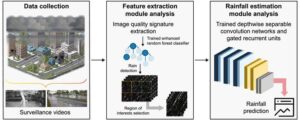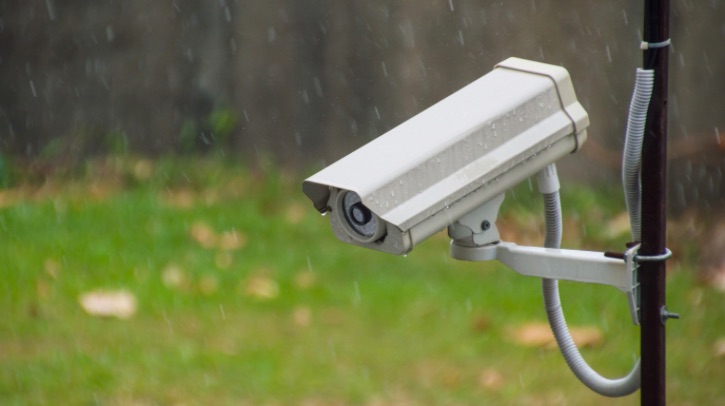A research team from Tianjin University has developed an AI-powered method that turns common surveillance cameras into real-time rainfall sensors. The team’s findings (DOI: 10.1016/j.ese.2025.100562) have been published in Environmental Science and Ecotechnology.
Leveraging deep learning
Tested in the cities of Tianjin and Fuzhou, this system achieved accuracy and robustness in predicting rainfall, even during night-time or under poor visibility conditions, the researchers reported.
The proposed system operates through two key modules: a feature extraction module (FeM) and a rainfall estimation module (RiM). The FeM analyzes video frames using a novel image quality signature (IQS) method that extracts brightness, contrast and texture features to detect rain streaks, even from noisy or low-light footage. It then uses an enhanced random forest classifier (eRFC) to classify video frames and apply optimal filters, accurately isolating rain features while discarding irrelevant visual information. The RiM employs a hybrid deep learning model combining depthwise separable convolution (DSC) and gated recurrent units (GRU), enabling it to capture both spatial and temporal patterns in rain events.

This architecture is said to have proved highly effective in estimating rainfall intensity (RI) at minute-level intervals. The model was trained on over 60 hours of video data and validated against rain gauge measurements, achieving an R² value of up to 0.95 and a Kling–Gupta efficiency (KGE) of 0.97. Additionally, the system demonstrated robustness across varying conditions, including daytime and night-time, and across multiple surveillance cameras.
“Our system leverages widely available surveillance infrastructure and advanced AI to fill gaps left by traditional rainfall monitoring techniques,” said Dr. Mingna Wang, senior author of the study.
“What’s most exciting is that we can now provide highly accurate, real-time rainfall estimates using existing urban technology, even under challenging conditions like night-time or high-density rainfall. This opens the door to smarter flood management systems and more resilient cities in the face of climate change.”
Scalable applications
According to the team, this work demonstrates a practical and scalable solution for improving hydrological monitoring and mitigating flood risks in cities worldwide, and is particularly valuable for cities facing infrastructure and budget constraints.
They assert that this was because surveillance cameras, already widespread in urban settings, offer untapped potential for fine-scale rainfall detection. However, they also point out that challenges like low video resolution, background noise and changing light conditions have hindered broader adoption. Due to these challenges, the team concluded that a deeper investigation into camera-based rainfall estimation is urgently needed.
The model’s ability to function across diverse lighting and environmental conditions makes it ideal for deployment in complex urban settings, the researchers state, adding that the framework can enhance predictive flood modeling, support emergency response strategies and inform infrastructure planning.
Future improvements, such as integrating additional data sources or optimizing performance during high-intensity rainfall, could further elevate its utility in climate adaptation and smart city initiatives.
In related news, Vodafone recently partnered with River Severn Partnership Advanced Wireless Innovation Region (RSPAWIR) and Wireless DNA to use its mobile network to provide more accurate rain nowcasting. Click here to read the full story



